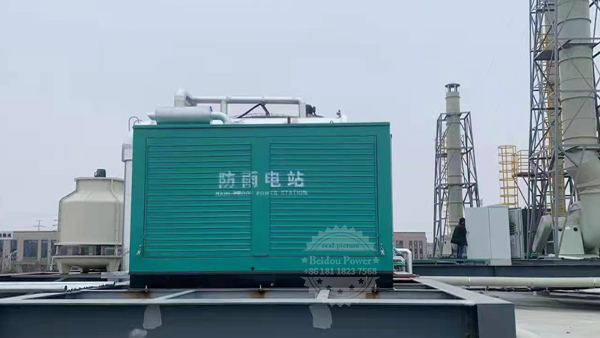The function of the exhaust system is to safely discharge engine exhaust to the outdoors and keep exhaust, smoke and noise away from buildings and crowds.
When the diesel generator set is installed, in order to absorb thermal expansion, displacement and vibration of the generator set, the exhaust port of the engine should be connected with a retractable stainless steel bellows of more than 24 inches. Similarly, the exhaust port of a small generator set directly fixed to the floor should also have more than 18 inches of bellows.
Corrugated pipes are strictly prohibited to act as elbows and to compensate for pipe installation errors. To reduce condensation corrosion, the exhaust muffler should be installed as close to the engine as possible for rapid heating. The muffler and the exhaust pipe should be supported by the hanger, and it is strictly forbidden to use the engine exhaust pipe to bear the weight. Otherwise, the exhaust pipe of the engine will be damaged and the life of the turbocharger will be reduced. Black iron pipes are recommended for exhaust pipes. Choose elbows with as large a radius as possible.
Under the premise of meeting the back pressure limit of the engine exhaust pipe, it is recommended that the nominal diameter of the entire exhaust system pipe should be as consistent as possible with the engine exhaust port. It is forbidden to use pipes with a diameter smaller than the exhaust port, because thick pipes are more susceptible to condensation corrosion, and at the same time, they will increase the exhaust gas displacement and cause power loss. The smaller the change in pipe diameter of the exhaust system, the smaller the friction loss. Implement thermal isolation for all mufflers and exhaust pipes to avoid accidental contact with fire or false activation of automatic fire extinguishing equipment, and reduce condensation corrosion and heat radiation in the unit room. Exhaust pipes and flammables should be at least 9 inches apart. When it is necessary to pass through walls and ceilings, the exhaust pipe should be equipped with flame retardant sleeves or insulation cotton. For every 100°F increase in temperature at room temperature, the exhaust pipe expands approximately 0.0076 inches per inch. It is recommended that stainless steel bellows must be used to absorb the thermal expansion of long straight pipes. The flat exhaust pipes should be sloped, and the low end should be away from the engine and extend outdoors. or condensate collector.
Condensation drains and plugs should be installed where the exhaust pipe turns vertically. The end of the exhaust system should be installed away from buildings and air intakes to avoid blackening of walls and windows. The exhaust system is installed in the lee of the building, as high as possible to facilitate exhaust emissions. Some standards stipulate that the end of the exhaust pipe should be at least 3 meters from the ground, 1 meter from the exterior wall or roof, 3 meters from the entrance of the building, and at least 3 meters above the adjacent buildings. The vertical exhaust port should be equipped with a rain cover.
Diesel generator sets cannot share the exhaust system with other equipment. Soot, corrosive condensate and high-temperature exhaust gas must not damage general equipment. The back pressure of the exhaust pipe is strictly prohibited to exceed the allowable value in the engine manual. Generally 20mbar-50mbar, too high back pressure will produce high temperature exhaust gas and soot, reducing the power and service life of the engine.
Before determining the layout of the exhaust system, the back pressure of the engine exhaust gas should be estimated; before the generator is officially put into operation, the back pressure value of the exhaust port should be measured at full load.
Post time: Apr-29-2022

